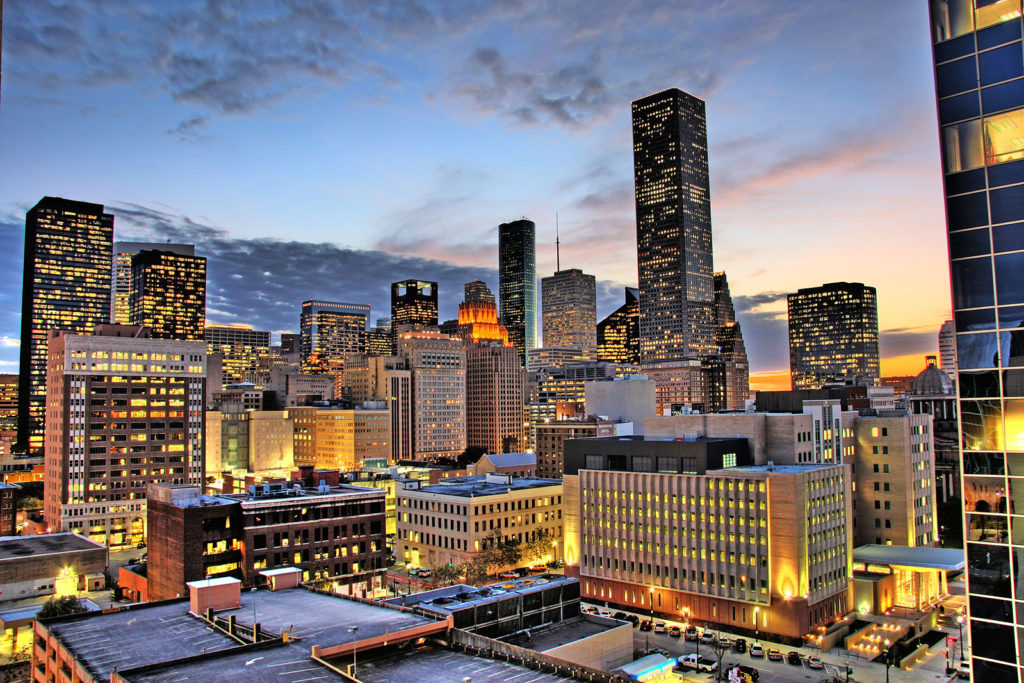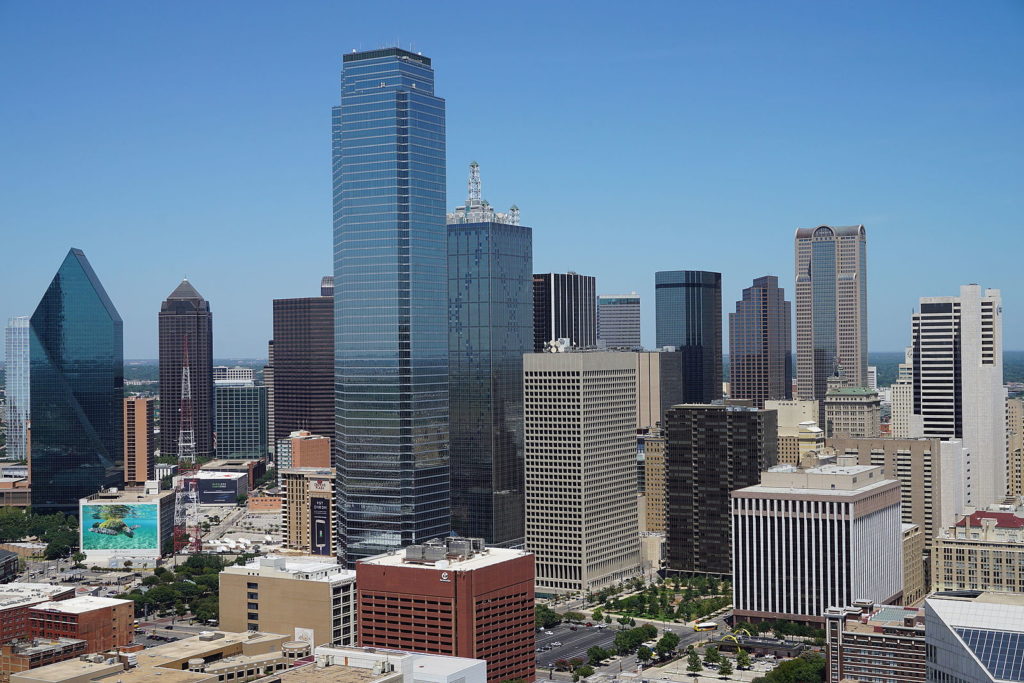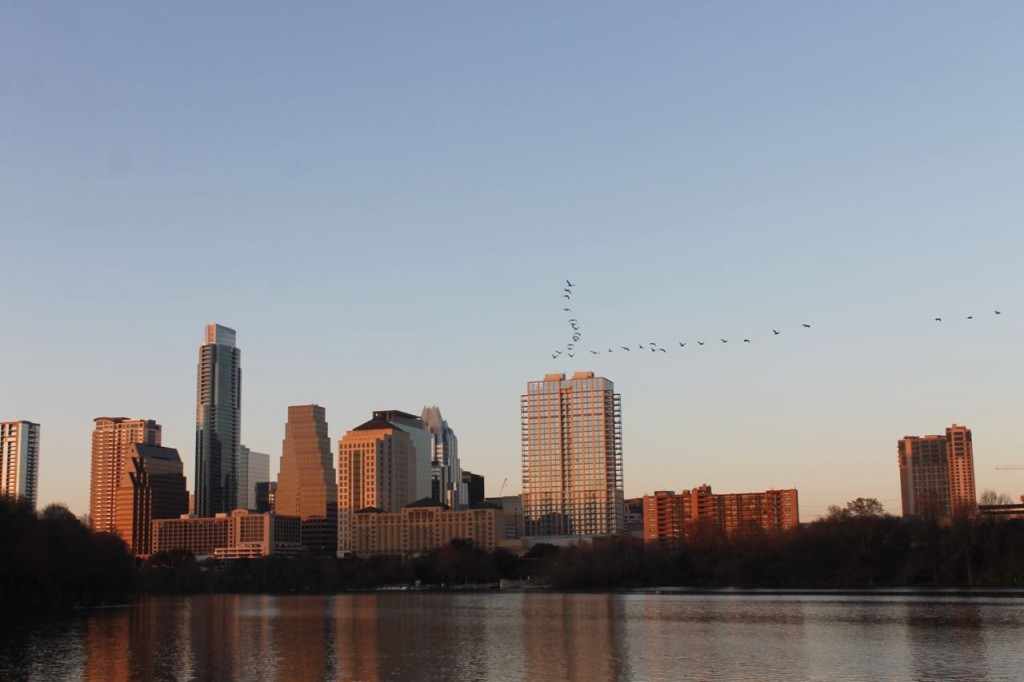
About The Author
This sponsored post was written Michael Coleman of Public Citizen Texas, a nonprofit advocacy organization that fights for clean energy, energy efficiency, and clean government.

Action Box
Stay informed on Public Citizen's climate activism by following Public Citizen Texas on Facebook.
This post/editorial is sponsored by the Public Citizen Texas. All Austin Common sponsors are screened by The Austin Common team to ensure they’re doing good for their employees, customers, our community, and the planet.
A report released by some of the world’s foremost climate scientists in August confirms what many of us have long feared: The earth is warming even faster than previously thought and anything less than a massive and urgent effort to slow the trend will have disastrous implications for the planet and everyone living here.
U.N. Secretary General Antonio Guterres described the document prepared by scientists with the Intergovernmental Panel on Climate Change (IPCC) as a “code red for humanity.”
In short, the IPCC warned that unless governments act now to slash greenhouse gas emissions that cause global warming, the earth’s temperature will rise by more than 1.5 degrees Celsius (2.7° Fahrenheit) within the next 20 years – or even sooner. An increase of 1.5 degrees Celsius warming alone will have profound adverse effects on wildlife, plants, the oceans and human societies. A warming of 2° Celsius or more would create an existential crisis for humankind and the earth’s ecosystems.
Climate change is already wreaking havoc on communities around the world – just look at this historic and deadly flooding that inundated New York City and surrounding areas after Hurricane Ida. The loss of life and damage to ecosystems, public infrastructure and private property is already at unacceptable levels. That’s why it’s crucial that we slash the greenhouse gas emissions that fuel climate change and cause extreme weather, including increasingly intense droughts, wildfires, floods, and hurricanes, as well as rising sea levels and melting permafrost.
The IPCC report made clear that governments at all levels need to act – and act fast.
“If we combine forces now, we can avert climate catastrophe,” Guterres said. “But, as (the IPCC) report makes clear, there is no time for delay and no room for excuses.”
In Texas, four of the five largest cities – Austin, Dallas, Houston and San Antonio – have adopted climate action plans. Each of the four cities has committed to a goal of net zero carbon emissions by 2050. But the 2050 timeline is simply not fast enough to prevent extreme harm from the climate crisis.
A study by the Brookings Institution found that only 45 of the 100 largest U.S. cities have adopted climate plans, and two-thirds of those cities that have are not meeting their goals. More than a dozen large US cities aren’t tracking emissions at all.
One of the most important actions cities can take is to stop burning coal and natural gas to make electricity. Cheap wind and solar, paired with now cost-competitive energy storage, along with demand-side strategies such as energy efficiency and demand response, can replace fossil fuel power plants that pollute our communities. Major cities across the globe, where most greenhouse gas-emitting power plants are located, industries and vehicles are concentrated, have the opportunity to lead.
In this article we’ll look at how four Texas cities are planning to combat climate change and contribute to a solution for our ailing planet.
Houston
No major city in Texas has more at stake than Houston when it comes to the climate crisis. Texas’ largest city is among the worst per capita greenhouse emitters in the U.S. and is increasingly vulnerable to catastrophic disasters such as Hurricanes Ike and Harvey because of changing weather patterns.
Mayor Sylvester Turner has committed to the Paris Accord, but the city’s 2050 goal for net zero emissions is simply not strong enough given the IPCC’s findings about the state of the climate crisis. The Houston area is home to some of the world’s worst polluting petrochemical companies and yet they are largely ignored in the city’s plan. The city ignored EPA data on greenhouse gas emissions from Houston’s industries when it created its greenhouse gas inventory, making the total amount of emissions appear smaller than they actually are.
Transportation accounts for almost half of Houston’s emissions inventory, and the city’s climate plan includes a shift to many more electric and low-emission vehicles in the city vehicle fleet. The plan entails converting all non-emergency municipal vehicles to electric vehicles by 2030, and increasing incentives and infrastructure for the private sector to do the same. It also vows to produce 5 million megawatt hours of solar power by 2050, and for the city to power its municipal operations with 100% renewable sources by 2025, which the City has already achieved. METRO, Houston’s transit agency, just announced plans to convert its entire fleet to electric by 2030.
One of the simplest ways to reduce carbon from the atmosphere is planting trees. Trees naturally remove CO2 from the atmosphere, and under the Houston Climate Action Plan the city aims to plant 4.6 million native trees by 2030. Nature-based solutions like tree plantings and prairie restoration can draw down carbon, and we hope to see adequate funding for this commitment to help the city to reach its goal.
Instead of facing facts about the need to dramatically cut emissions, Houston is pinning its hopes on carbon capture, an industrial scale mechanism that entails injecting pressurized carbon dioxide into rock formations underground. We oppose carbon capture in the energy industry as a solution to the climate crisis because it will cost more, take longer, provide less certainty, and fail to address other air pollution from industry. Houston should build on its recent success purchasing renewable power and electric vehicles for city operations and start working to reduce industry and other private sector emissions. Corporations also need to be held accountable for their carbon emissions. The federal government should remove subsidies that needlessly prop up the oil and gas industry, despite cleaner, safer alternatives.
It will take much more ambitious action by Houston to achieve emissions reductions that are adequate for helping to solve the climate crisis.

Dallas
In May 2020, the Dallas City Council unanimously approved the Dallas Comprehensive Environmental and Climate Action Plan (CECAP) after nearly two years of persistent encouragement by advocates, some forward-thinking city leaders and members of the community.
Dallas’ goal is to have 43% reductions by 2030 with net zero by 2050. But Dallas’ plan falls far short of this goal. The Dallas plan estimates 25 percent reductions by 2030 and 66 percent by 2050. This is not to single out Dallas for criticism. Indeed, few if any climate plans in existence do meet their net zero goal. Dallas is particularly vulnerable to this criticism because it released a detailed greenhouse gas emissions inventory and attempted to quantify the emissions reductions from its strategies. Many cities, including Houston, do not have enough detail in their plans to quantify emissions reductions over time. So, while the Dallas plan clearly falls short, it does so with documentation.
The Dallas (CECAP) includes 97 measures in eight distinct focus areas. Since it’s approval in spring 2020, the city has undertaken several studies to advance the plan, including a Strategic Mobility Plan to move from an auto-centric to a more multi-modal transportation network. The city has completed its Urban Forestry Plan and is also assessing energy efficiency upgrades for more than 500 city-owned facilities, including the feasibility of installing solar.
Dallas has received two Department of Energy grants and is about to launch a pilot program for the installation of residential solar for low and moderate income households. Dallas has also made a recent call for bids for a solar array on one of its old landfill sites. We’d like to see Dallas expand that effort and explore additional sites for more community solar projects.
Dallas is about to look into the strategic placement of electric charging stations. With the approval of the new Dallas budget, which includes the purchase of new City vehicles, at the end of September, we urge Dallas to more quickly electrify its city vehicle fleet and urge Dallas Area Rapid Transit and the Dallas Independent School District to do the same.
Dallas has committed to a three-year cycle of updating its emissions inventory and evaluating the success of its plan against the inventory. We look forward to this review process and urge Dallas to strengthen its plan with the next update over time in order to meet its stated goals. Right now, we are asking the Dallas City Council to fully fund the CECAP in the city’s next budget.

San Antonio
San Antonio – the second largest city in Texas – adopted its climate plan in the fall of 2019, pledging to reduce greenhouse gas emissions by 41 percent by 2030, 71 percent by 2030 and achieve carbon neutrality by 2050. But again, this goal doesn’t align with the scientific consensus on how quickly emissions must be reduced to keep global warming to 1.5 degrees Celsius.
The San Antonio plan outlines six strategies to reduce greenhouse gas emissions: electrification of city buildings, reducing buildings’ energy consumption, reducing transportation energy consumption, advancing the circular economy (reducing consumption, minimizing waste, encouraging material reuse), promoting biodiversity and healthy ecosystems, and educating local citizens about climate change and and empowering them to help.
One of the biggest impediments to San Antonio’s progress in combating the climate crisis is the continued operation of CPS Energy’s coal plant. CPS Energy has bragged about funding development of the climate plan, but the utility failed to provide any analysis of options for phasing out its use of fossil fuels during the planning process. We’re calling on CPS Energy to close the Spruce coal-burning power plant by 2025 and phase out it’s natural gas power plants by 2030.

Austin
The City of Austin has acted much more ambitiously and preemptively to confront the climate crisis than Houston, Dallas or San Antonio. In 2014, the Austin City Council adopted a goal for the entire Austin community to reach net-zero greenhouse gas emissions by 2050 or sooner. The Austin Office of Sustainability led a community process to develop the Austin Community Climate Plan. The plan was adopted by the Austin City Council in 2015. The document identifies strategies for reducing greenhouse gas emissions in three sectors: electricity and natural gas, transportation and land use and materials and waste management.
Austin is fortunate to have a publicly owned electric utility, Austin Energy. Instead of answering to shareholders, the utility is beholden to the people of Austin and governed by the Austin City Council. This makes it possible for us and other advocates to push the utility to be an accountable, driving force in the transition to renewable energy.
A revision to the Austin climate plan in 2020 committed Austin Energy to shutting down its last natural gas power plants by 2035. The utility previously committed to stop burning coal by the end of 2022 .
Austin has a robust plan for electrifying the city fleet, and electric options are evaluated before purchasing any new city vehicles – even large vehicles, like garbage trucks. The city – primarily through Austin Energy – is working with Capital Metro to electrify public transportation. CapMetro has vowed that its most recent purchase of diesel buses would be its last and all future busses, as well as trains, will be electric.
Austin is poised to double down on past leadership with the upcoming adoption of the Austin Climate Equity Plan. The plan will establish a new goal of net-zero community-wide greenhouse gas emission by 2040, following a steep decline emissions path that prioritizes reductions in the coming decade. The plan also states that local emissions reductions are the priority and that offsets in the form of negative emissions (carbon capture and sequestration) should account for no more than 10% in any sector. The plan also acknowledges that the city will need to make significant investments in carbon capture (via natural systems and technology) in order to achieve the level of negative emissions necessary to stabilize the climate.
Just as importantly, the Austin Climate Equity Plan – as the name implies – puts emphasis on equity. It acknowledges the historical and current racial injustices in the Austin community and seeks to position climate action as a tool for reversing those injustices. The plan includes recommendations to ensure that those who have borne the brunt of past injustices and those who benefit the least from current systems are able to access solutions that will reduce pollution and improve quality of life.
We are excited to work with the City of Austin to implement this new plan once it is adopted. We are also eager to help other Texas cities learn from this plan and incorporate its ambitious initiatives into their own climate strategies.

What's Next?
David Victor, co-author of the Brookings report and professor of international relations at the University of California, told USA Today this month that cities can drive the change needed to save our planet.
“Cities make great laboratories for combating climate change because some of the hardest tasks in cutting emissions involve activities such as urban planning and rebuilding transportation infrastructures – areas where cities are on the front lines,” Victor said, adding that if a critical mass of cities each take action it would be “a powerful approach to climate mitigation.”
We hope Texas cities heed the call and step up their efforts to curb emissions over the next 5-10 years, as needed to curb the climate crisis and avert catastrophe.
P.S. Fort Worth – you’re the fifth largest city in Texas. What are you waiting for?
Adrian Shelley, Kaiba White, Stephanie Thomas and DeeDee Belmares of Public Citizen’s Texas office contributed to this report.



